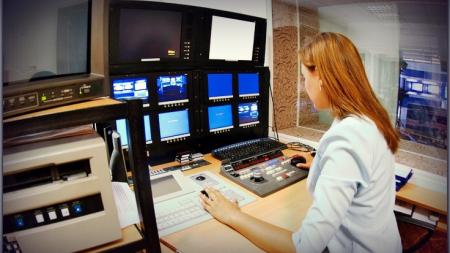
8 Video Editing Habits to Drop Right Now
If you take anything away from your Baltimore video editing classes, it’s that video editing is a creative career that relies on structure and rules.
Sure, editing allows you to express your artistic vision.
But remember, when you are hired by someone to professionally edit their video production project, you are not only bound by the “rules” of video editing, you are bound by your client’s overall concept as well. This means you should avoid bad habits and practice restraint at all times.
Today we will look at eight video editing habits you have to drop right now if you want to become a successful video editor.
8 Video Editing Habits to Break Today
Despite the subjectivity that lingers over video editors and their creative processes, in order to make it as an editor in the competitive Maryland video production industry, you must stick to the basic principles that you learned at The Sheffield Institute for the Recording Arts.
1. Stop Winging It
Creativity is often unstructured and unpredictable. And while this can sometimes spur some of you best work, in a professional setting it is best to avoid “winging it” when dealing with a client’s video production.
While it may seem tempting to wait to start the editing process until after your next project is already finished filming, it is important that you become involved long before that.
Being involved during the filming phase will help you better understand the vision of the director, which is based off of your client’s goals.
In the end, this will lead to a more efficient editing process and a greater chance of client satisfaction with the final product.
2. Do Not Jump Right In
When starting a new project, it is easy to jump right into a project and add in every trick you learned during your Baltimore video editing classes. Yet, this can cause many problems with your client when you request approval for the final product.
Take some time to learn about each project before jumping right into your normal editing process.
Here are some things to consider:
· Determine where viewers will see the footage. For instance, is it a television commercial, online video, or a social media clip?
· Outline the exact details such as length, resolution, and format.
· Map out your plan of action before starting any editing.
If you take the time in the beginning to figure out exactly what your client wants before you put any time or effort into editing the piece, chances are you will have a satisfied customer at the end of the process.
3. Avoid Your Go-To Transitions
Once you get into the groove as a video editor and feel that you have a solid reputation in your field, it is easy to fall into the same old habit of using your favorite transitions to move footage along. Instead, try switching things up based on your client’s needs and the type of film you are editing.
There are plenty of transitions to try. Take a look:
· Cut. Simply placing two video clips next to one another.
· Dissolve. Layering two clips together so there is a seamless transition between the two.
· Fade to/Fade from Black. To show a change in time, location, or subject by fading in and out to black between shots.
· Light Flash. Quickly fading to a white screen for a split second to seem as though a camera flashed.
· Particle Wipes. Using elements, such as sparkles or bubbles, to transition from one clip to the next.
Each transition type adds a unique element to the film you are editing, so be sure to use them strategically.
These unique elements are the ones that will win your client over and make the final production an effective piece when played for your client’s target audience.
4. Do Not Forget Audio
Audio plays a large role in how effective a video will be in its finalized state. In fact, many professionals will tell you that audio is one-half of a video and can make or break its success.
Learning how to seamlessly mix audio is a valuable technical skill, crucial to the success of editors, and is one of the top lessons in the Audioworks track of The Sheffield Institute for the Recording Arts.
It is important to gauge things, such as volume and cutoffs, when editing a client’s film.
In addition, any audio added to a video should enhance the production, not hinder it. And of course, there must be an element of consistency throughout the piece.
5. Underutilizing Graphics
Nowadays, graphics are becoming the norm in many Baltimore video production projects. This includes television commercials and especially online videos.
Whether your client’s video will broadcast on television, a popular social media platform such as YouTube, or on a company website, utilizing graphics can make a video stand out amongst the competition.
Use graphics to share a call to action in a commercial or to direct viewers to a website or brick and mortar shop.
Better yet, use powerful graphics in the beginning of a video production to grab the viewers’ attention and make them want to know more.
In the end, using graphics in any type of video production can have a powerful effect if used correctly. That’s why schools like Sheffield instruct their video editing students using the latest trends and technology. This way, when they enter the field of video editing, they come prepared with plenty of valuable skills.
6. Overusing Special Effects
Much like audio, special effects are instrumental in making a drab video production stand out in a crowd. However, there is always the risk that you overdo it and make the production ineffective.
Special effects are fun to learn during video editing class. In fact, many effects are so “cool” that you may be tempted to use all of the special effects you know in one film.
Do not do this.
Sometimes less is more. Overwhelming the viewer will cause them to lose interest and defeats the purpose your client has for having a film produced in the first place.
7. Do Not Plagiarize
Curating ideas from video editors you aspire to be like is okay. Just make sure that when you are working on a client’s project, you are not imitating the professionals that inspired you to try something new.
Not only is this wrong, it can affect your reputation as an upstanding, respectable video editor.
In the film industry, word of mouth is very powerful. Do not be known as the one with no fresh ideas.
8. Do Not Use It All
As a video editor, it is your job to cut, splice, and put back together raw footage in the most interesting and impactful way possible. This means that you must always rely on your best judgement and keep only the best footage that will make for an effective final product.
If the shot does not fit in with your client’s overall vision, regardless of how perfect it is, get rid of it.
Be selective, use the skills acquired during your video editing classes, and only use shots that are a good fit for the project. That’s how you will produce a successful final cut.
In the end, it is easy to see how bad habits can negatively affect your editing process and ultimately the final product. It is important to take your video editing classes seriously and not hang onto the same old methods you know and love.
To grow as a video editor in the Baltimore area, learn from the best at The Sheffield Institute for the Recording Arts. Our expert instructors are there to help you build a successful video editing career.



